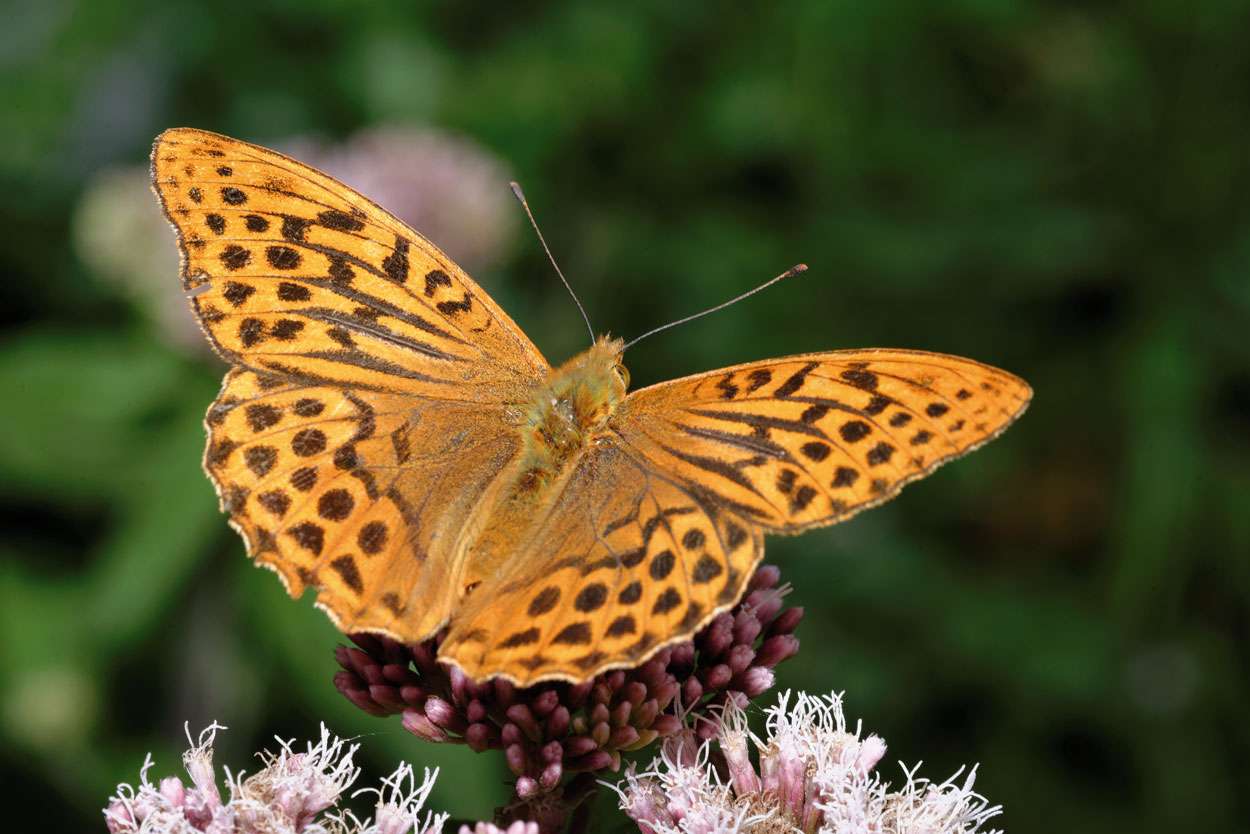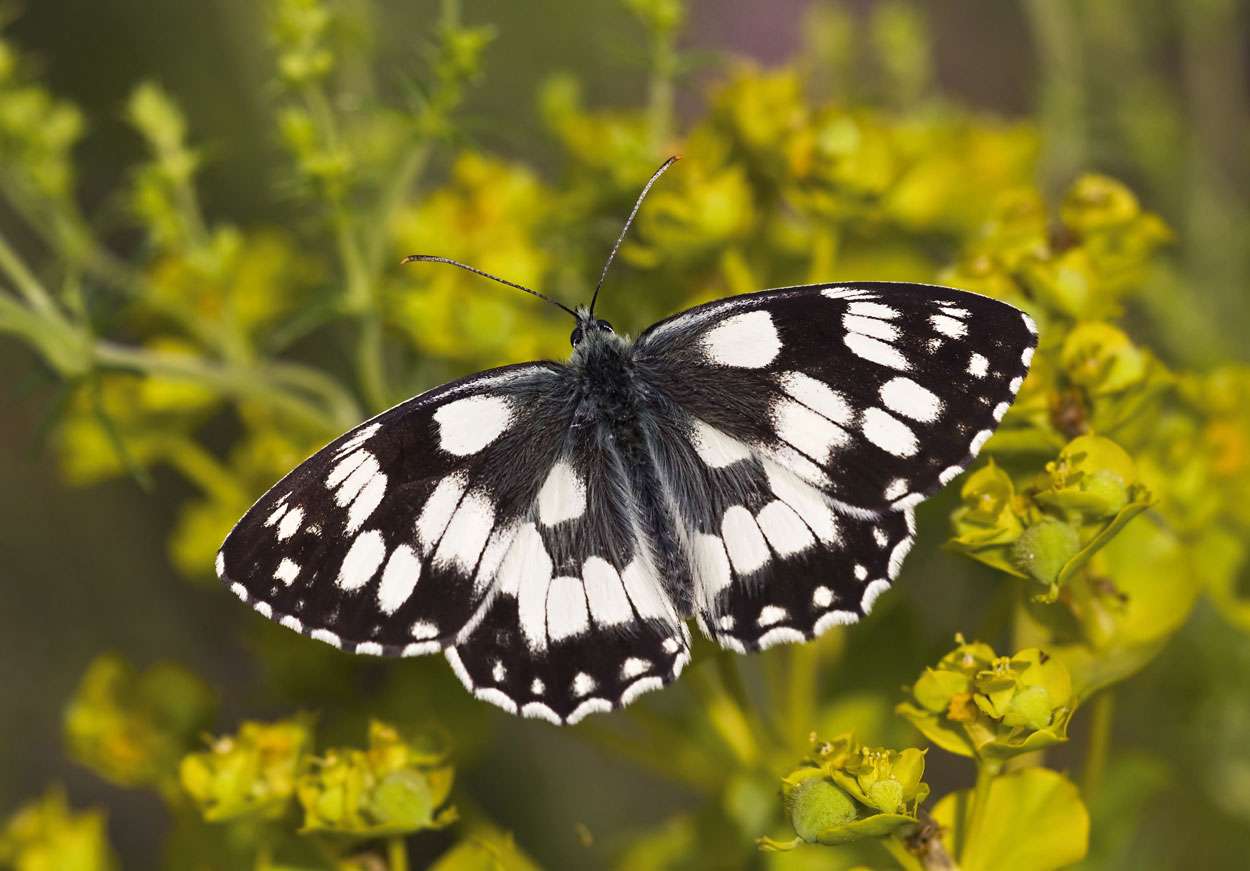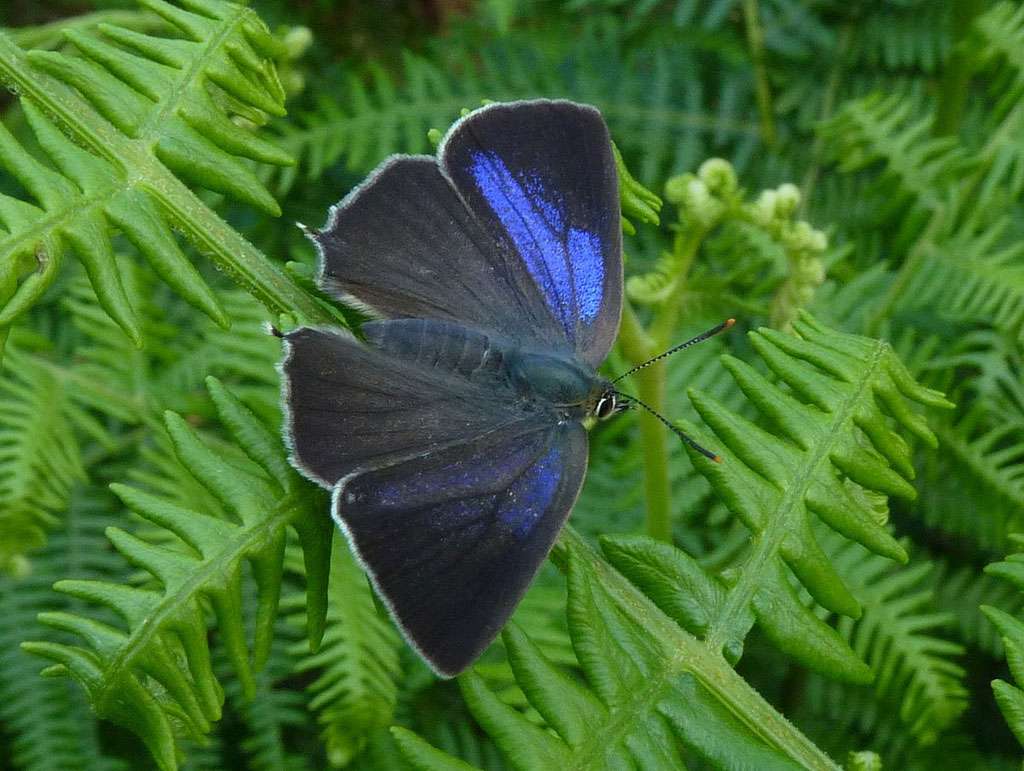
Treecreeper (Certhia familiaris)
Our long hot summer has born a butterfly bonanza all around the south of England, enabling many of us to enjoy some unusual garden visitors.
I’ve counted 17 species in my small plot so far and two of those I’ve only seen a couple of times there before.
First up was the stunning Silver-washed Fritillary. This insect has emerged in exceptional numbers this year to dart and dazzle along the rides in the woods around Cranleigh and surrounding villages.
Some spread further and ‘my’ glorious golden visitor glided in alongside a line of oaks. After a few aerobatics around the branches he quickly decided he was in the wrong place and shot off.
The second rare arrival was a daintier delight. The magnificent Marbled White. But finding no thistles this black and white chequered champion of the meadows also moved on as fast as it had arrived.

Silver-washed Fritillary
Until recently this butterfly was more associated with downland. But my local ‘butterfly guru’ friend Francis Kelly and I have both found it is increasing its range into new sites around the village.
It is up in the oaks, though, where the action has really been happening this summer. I’ve recorded unprecedented numbers of small Purple Hairstreak flitting among the tree tops. In the early evenings the show begins as they court in a spinning frenzy, their undersides flashing silver as they dance.
High summer’s butterfly blessings offer welcome respite from what is usually a quiet time of the year for the birds. But at least if you are looking for butterflies you will probably find a nice bird too….
And the scanning of the oak leaves duly paid off with close views of a common species that many people have never yet noticed. Old magnet feet. I worked my way nearer.
Just six feet away from me was one of our more secretive birds. The song is short, high-pitched and squeaky so it is often missed. The call is so very soft it must be carefully listened for and is sadly too far up the scale for some older folk. And its habits and camouflage generally keep it well out of view.

Marbled White
The unobtrusive and brilliantly designed Treecreeper is one of our best-named birds and does exactly what it says on the tin. Creeps up trees – and along and underneath branches. Don’t expect to see one on your bird table. Its larder is alive in the oaks where it creeps mouse-like in a seemingly never-ending quest to up its calorie count and stay alive.
Easily dismissed as an ‘LBJ’ (Little Brown Job), this bird is indeed mostly brownish but it has thin white streaking on the upperparts, a white eye stripe, and clean white underparts.
When you see one you probably will not have long to take all the features in for it is always on the go as it uses its long-decurved bill to pick out spiders and other insects from crevices in the bark.
Its long, stiff tail gives it support for climbing vertically. That supersize bill and tail make it look far bigger than it is – the body is only about the size of a Wren.
Oaks have a treasure trove of rough surfaces for mini beasts so are greatly favoured but you can see the bird in almost any tree, including the stands of Scots Pines in the Surrey Hills.

Purple Hairstreak
If you see something fly down at a 45-degree angle from one tree to the next then it is probably a Treecreeper. Distant ones will often work their way towards you and can be quite tame if you stay still. Of course, they will invariably land on the wrong side of the tree to you but with patience you can expect close views.
Now, with the first leaves of autumn beginning to fall, it will gradually be easier to see Treecreepers as the tree trunks slowly emerge. Winter should produce even more sightings – especially if you look out for roving flocks of Tits. Shopping together makes it easier to find the food.
The breeding site of the Treecreeper is most unusual. It slaves away for a week building a nest using as many as 6,500 or more tree fragments behind a fissure or loose piece of bark on the tree trunk.
Spare it a thought if you are thinking of ‘tidying up’ your trees. As well as hosting Treecreepers and many other bird species, it is mind boggling to realise that oaks alone have 350 species of creepy crawlies associated with them.
Click here to see all of Robin Stride’s previous Crane Spotters











